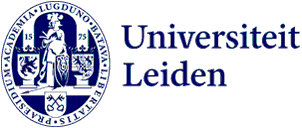240 search results for “sara cell differentiatie” in the Student website
-
 Sara Alkabra
Sara AlkabraAdministrative Shared Service Centre
-
 Sara Israel
Sara IsraelStudent and Educational Affairs (SEA)
-
 Sara Cigna
Sara CignaLuris
-
 Sara Velthuizen
Sara VelthuizenSocial & Behavioural Sciences
-
 Sara Blokland
Sara BloklandFaculty of Humanities
-
 Sara Hondmann
Sara HondmannSocial & Behavioural Sciences
-
 Sara Perlstein
Sara PerlsteinFaculty of Governance and Global Affairs
-
 Sara van Gerwen
Sara van GerwenSocial & Behavioural Sciences
-
 Sara Kulic
Sara KulicFaculty of Governance and Global Affairs
-
 Sara Petrollino
Sara PetrollinoFaculty of Humanities
-
 Sara Bolghiran
Sara BolghiranFaculty of Humanities
-
 Sara Polak
Sara PolakFaculty of Humanities
-
 Sara Brandellero
Sara BrandelleroFaculty of Humanities
-
 Sara de Wit
Sara de WitFaculty of Humanities
-
 Sara Clarrise Noussi-Tegantchouang Njomgang
Sara Clarrise Noussi-Tegantchouang NjomgangFaculty of Humanities
-
 Micha Drukker
Micha DrukkerFaculty of Science
-
 Alexandra Rösch
Alexandra RöschFaculty of Science
-
 Willem Fibbe
Willem FibbeFaculteit Geneeskunde
-
Honorary doctorate for Canadian-American astrophysicist Sara Seager
Leiden University will confer an honorary doctorate on astrophysicist Sara Seager for her work on exoplanets.
-
 Dennis Claessen
Dennis ClaessenFaculty of Science
-
 Frank Schaftenaar
Frank SchaftenaarFaculty of Science
-
 Ewa Snaar-Jagalska
Ewa Snaar-JagalskaFaculty of Science
-
 Douwe Atsma
Douwe AtsmaFaculteit Geneeskunde
-
 Noortje Dannenberg
Noortje DannenbergFaculty of Science
-
 Erik Danen
Erik DanenFaculty of Science
-
 Joost Beltman
Joost BeltmanFaculty of Science
-
 Marjolein Crooijmans
Marjolein CrooijmansFaculty of Science
-
 Tessa Vergroesen
Tessa VergroesenFaculty of Science
-
 Luuk Reinalda
Luuk ReinaldaFaculty of Science
-
 Saloni Saxena
Saloni SaxenaFaculty of Science
-
 Arthur Ram
Arthur RamFaculty of Science
-
 Serkan Aslan
Serkan AslanFaculty of Science
-
 Christine Mummery
Christine MummeryFaculteit Geneeskunde
-
How cells talk by pulling on a fibre network
Mechanics play a larger role in blood vessel formation, and other developmental biology, than previously thought. Cells appear to respond to mechanical signals, such as pressure. Through the extracellular matrix, a network of fibrous proteins, cells can supposedly exchange those mechanical signals over…
-
Bacteria without cell wall gobble up DNA from environment
A bacterium hiding from the immune system and picking up bits of DNA from its environment. The result: gaining new traits, such as better protection against antibiotics. Fortunately, we have not found such a damning scenario yet. However, PhD student Renée Kapteijn did find the first clues, which…
-
Greater understanding of specialised cell could prevent strokes
Ilze Bot wants to reduce the prevalence of cardiovascular diseases. Her research focuses on mast cells, which protect us from infections but can also make us ill.
-
forming embryo to cancer metastasis: the significance of collective cell movement
Luca Giomi has the first results of his ERC consolidator grant. He discovered that epithelial cells move collectively but in different ways, depending on the scale you look at. It is hexatic at small scales, and becomes nematic at larger scales: it is a multiscale order. This collective movement of…
-
 Joey Zuijdervelt
Joey ZuijderveltFaculty of Science
-
Stiffness and viscosity of cells differ in cancer and other diseases
During illness, the stiffness or viscosity of cells can change. Tom Evers demonstrated this by measuring such properties of human immune cells for the first time. ‘The stiffness of certain cells could be a way to make a diagnosis,’ Evers said. He defended his thesis on March 26th.
-
First patient in the Netherlands successfully treated with stem cell gene therapy
Researchers from the Leiden University Medical Center (LUMC) have successfully used stem cell gene therapy to treat a baby with the severe congenital immune disorder SCID. An important milestone: it is the first time stem cell gene therapy of Dutch origin has been administered to a patient, and also…
-
How cells determine the fate of proteins (and can we do it too?)
Cells in our bodies are often threatened by errors in our own proteins. The FLOW consortium, comprising scientists from various institutions including Leiden, is poised to meticulously map out for the first time how cells control proteins, correcting or removing faulty ones. This endeavour holds promise…
-
collagen to canvas: interactive artwork brings the world between our cells to life
What’s really happening in the space between the cells in your body? With the Collagen Canvas project, students from Leiden University invite you to explore this question by blending science with art. This interactive artwork immerses you in the dynamics of the extracellular matrix—the invisible structure…
-
How to hijack natural destruction in cells: ‘We need to understand it through and through’
Destroying proteins from the Golgi apparatus of the cell in a controlled manner. That is the focus of chemist Marta Artola’s pioneering research. By developing a groundbreaking technology to target specific proteins in the Golgi, Artola aims to unlock new ways for drug development. For this ambitious…
-
Leiden chemists discover new ways in which single-celled organisms organise their DNA
It has only recently been discovered that single-celled organisms (bacteria and archaea) also have histones—proteins that structure DNA. Now, Leiden PhD candidate Samuel Schwab has found that the histones in these organisms are much more diverse than previously thought. Schwab and his colleagues describe…
-
 Bas ter Braak
Bas ter BraakFaculty of Science
-
technique uncovers disease-related changes in tiny droplets within our cells
Understanding the behaviour of tiny droplets in our cells could aid the search for new treatments. A team of Leiden researchers has developed a groundbreaking method to study how these droplets transition from liquid to solid. This change plays a role in various diseases, including neurodegenerative…
-
 Peter Bouwman
Peter BouwmanFaculty of Science
-
 Bart Kramer
Bart KramerFaculty of Science
-
 Joost Willemse
Joost WillemseFaculty of Science
-
 Sylvia Le Dévédec
Sylvia Le DévédecFaculty of Science
